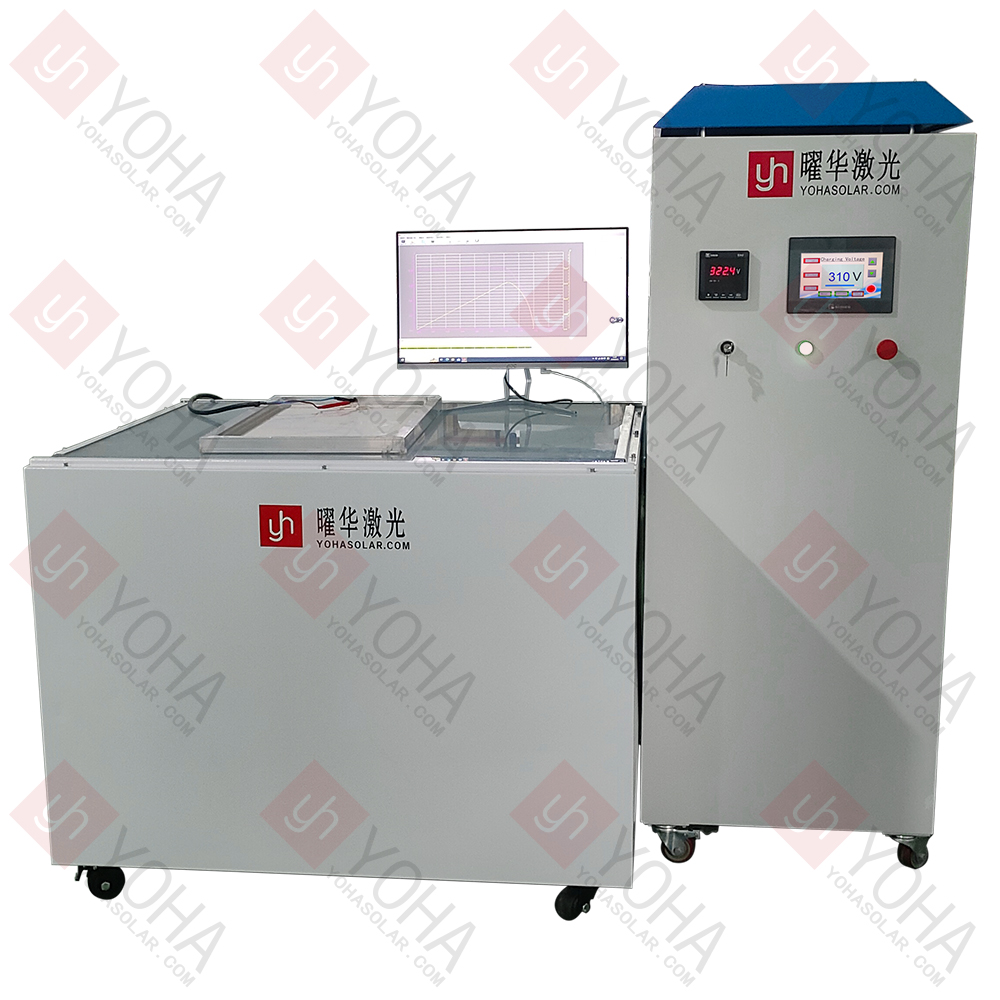Welcome to Wuhan Yoha Solar Technology Co., Ltd!
common problem
Site Map
Language:
 Chinese
Chinese
 English
English
Welcome to Wuhan Yoha Solar Technology Co., Ltd!
common problem
Site Map
Language:
 Chinese
Chinese
 English
English
The Solar Small Module IV Tester is a professional testing instrument that utilizes a pulsed light source to simulate Standard Test Conditions (STC). It is specifically designed for rapid and precise measurement of the current-voltage (IV) characteristic curve of single solar cells, single cell strings, small modules, or samples. It automatically calculates key performance parameters (such as open-circuit voltage Voc, short-circuit current Isc, maximum power Pmax, fill factor FF, conversion efficiency, etc.) and features module grading capability. Widely applied in R&D laboratories, production line quality control, incoming material inspection, and failure analysis.

Accurate and Efficient Pulsed Testing: Utilizes a high-precision pulsed light source to instantaneously simulate STC. Completes an IV characteristic measurement within milliseconds, minimizing the temperature rise effect on the tested module. Ensures accuracy and repeatability of measurement results (Voc, Isc, Pmax, FF, efficiency, etc.).
Fully Automatic Measurement & Data Analysis: Initiates IV curve scanning and data collection with a single button press. Built-in algorithms calculate all key performance parameters in real-time and automatically generate test reports. Significantly improves testing efficiency and reduces human error, making it ideal for high-speed production line inspection.
Intelligent Grading & Data Management: Features preset standards or custom parameter thresholds. Automatically performs rapid grading (Grade A, Grade B, etc.) or pass/fail judgment based on test results (e.g., power, efficiency). Supports data storage, traceability, export, and networked management for convenient quality control and statistical analysis.
Wide Compatibility & Flexibility: Designed for various small PV modules, including mono/polycrystalline silicon cell modules. Flexible and easy-to-use fixture design caters to diverse testing needs in R&D, laboratories, production line QC, incoming inspection, and failure analysis.
| Item | Parameter |
|---|---|
| Model Specification | YHMT-AAA |
| Light Source | Complies with IEC 60904-9:2020 spectral requirements (Class A) |
| Spectral Range | 300~1200nm |
| Irradiance | 1000W/m² (200~1200W/m²) |
| Light Intensity Non-Uniformity | ≤2% (A) |
| Light Intensity Instability | ≤2% (A) |
| Test Result Consistency | ≤1% |
| Electrical Parameter Measurement Error | ≤2% |
| Single Flash Pulse Width | 10ms |
| Effective Testing Area | 1000*800mm |
| Power Supply | 220V/50HZ |
1. Supporting PV R&D Innovation: Used for rapid evaluation of the electrical performance (IV curve and parameters like Voc, Isc, Pmax) of new materials, new cell structures (e.g., shingled, half-cut cells), or new process samples. Provides critical data support for technical optimization and product design.
2. Ensuring Production Line Quality & Efficiency: Performs online/offline inspection at key processes like cell sorting, stringing, and small module lamination. Quickly screens out defective products and enables automatic power binning, ensuring product consistency and production yield.
3. Strict Control of Incoming Material Quality: Conducts incoming inspection for purchased cells, single cell strings, or small samples. Verifies the authenticity of supplier specifications (especially power and efficiency), preventing substandard raw materials from entering the production process and reducing downstream risks.
4. Diagnosing Module Failure & Reliability: Used to analyze performance degradation causes in modules after aging tests (damp heat, PID, etc.) or outdoor failures. Precisely locates fault modes (e.g., resistance degradation, active area loss) by comparing IV curve changes, guiding product improvement.
1. Strictly Adhere to Light Source Safety Regulations: The equipment emits high-energy, extremely bright light pulses. Strictly prohibited from looking directly at the light source or opening the test chamber door during operation.
2. Ensure Proper Grounding & Electrical Isolation: The equipment involves high voltage and large current output. Must be reliably grounded, and the power supply must meet specifications. Regularly inspect cable insulation.
3. Precisely Control Test Environment Temperature & Humidity: Module performance is significantly affected by temperature. Pre-heat/pre-cool modules to the set temperature (typically 25°C ±1°C) before testing, and monitor the module surface temperature precisely in real-time (using calibrated contact sensors). Environmental humidity must be controlled within the specified range (typically <60% RH) to prevent condensation or high-voltage discharge risks.
4. Correct Use of Test Fixtures: Regularly clean test fixtures to prevent oxidation and avoid poor contact, which can cause measurement errors or local overheating damaging the module.
5. Regular Calibration & Maintenance of Core Components: Light source intensity (irradiance uniformity, stability), current/voltage sensor accuracy, and temperature probes are core metrology units and must be calibrated regularly according to standards (e.g., IEC 60904 series). Simultaneously maintain optical components (clean lenses/reflectors) and mechanical movement mechanisms to ensure stable and reliable equipment status.
6. Standardized Operating Procedures & Parameter Settings: Accurately input module parameters (e.g., nominal power, type) before testing. Cautiously set pulse width and voltage intensity to avoid irreversible thermal damage to modules caused by excessively long/strong pulses (especially for thin or temperature-sensitive materials). Allow modules to cool sufficiently after testing before the next test or removal. Investigate environmental, contact, and equipment status factors when handling abnormal data; strictly prohibit arbitrarily modifying or ignoring abnormal results.
TOP
18086473422
MESSAGE
